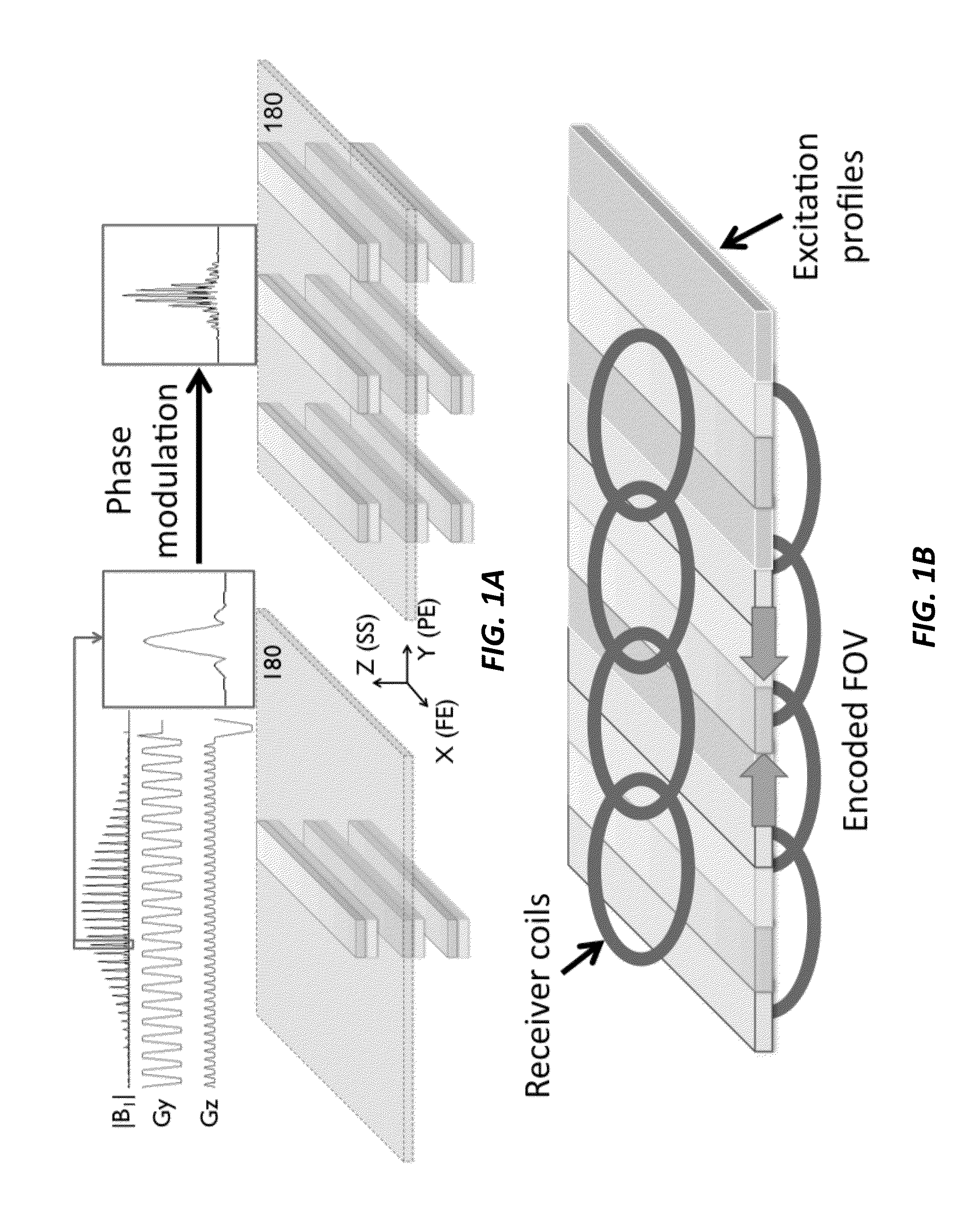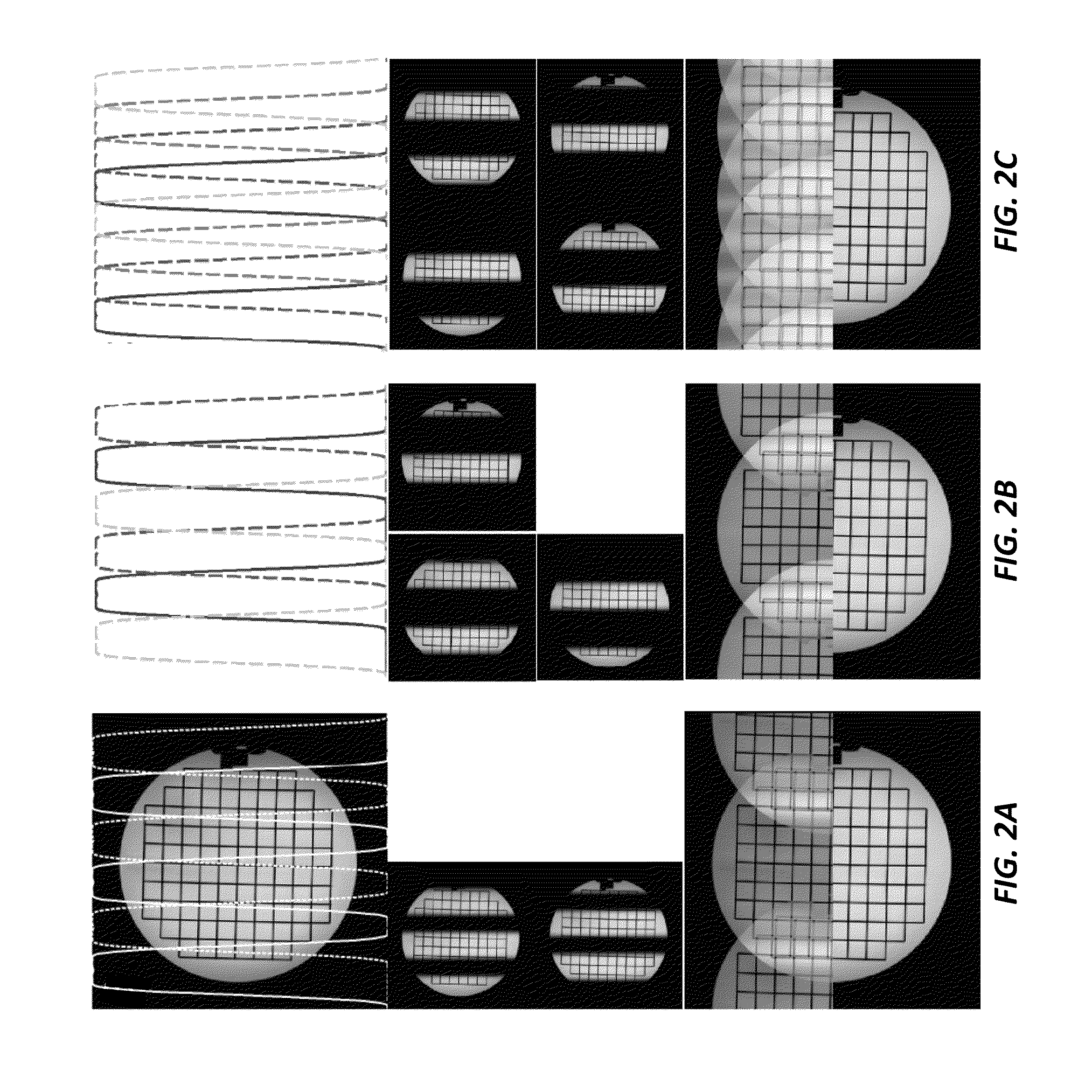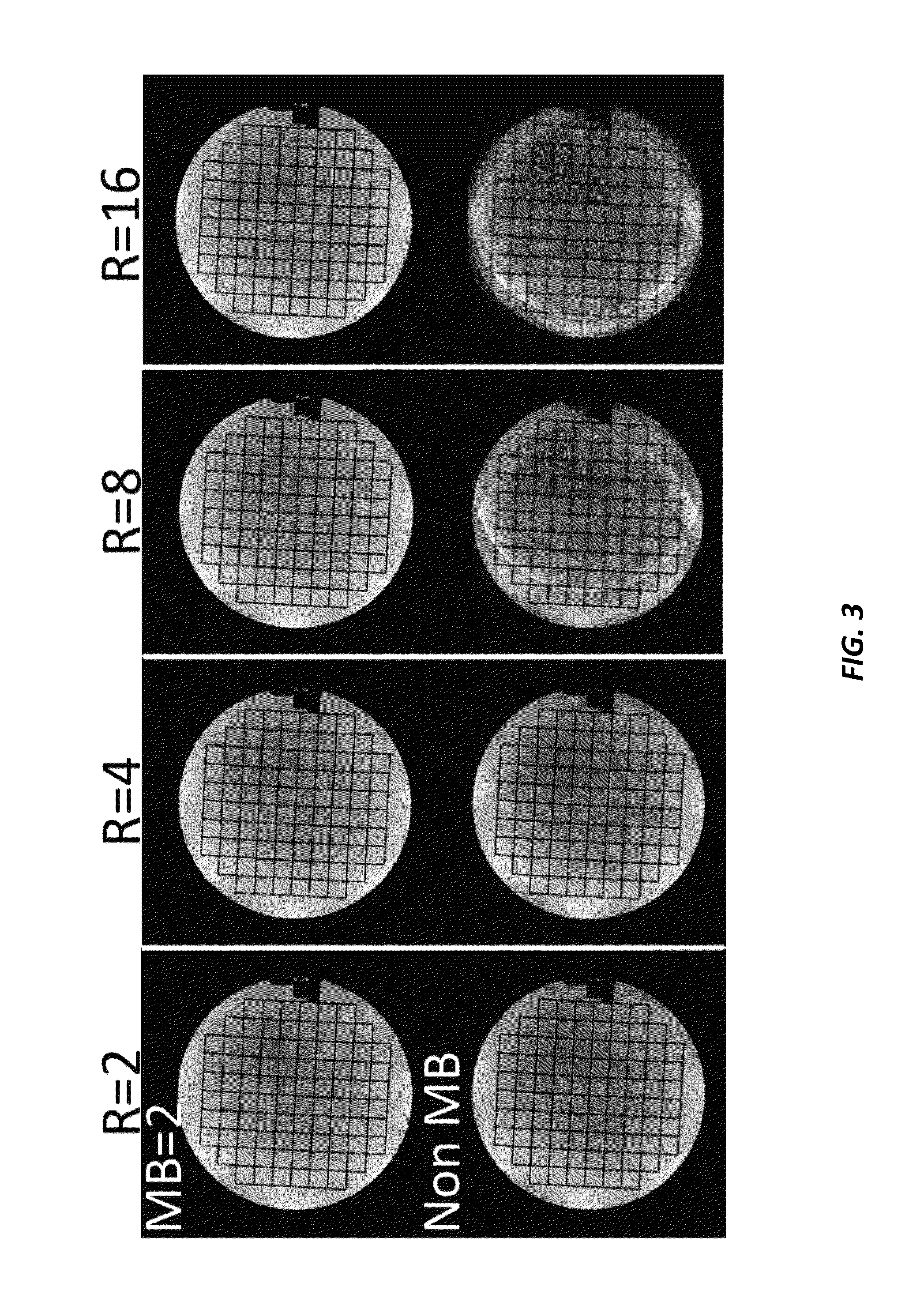High Resolution Magnetic Resonance Imaging with Reduced Distortion Based on Reduced-Field-of-View and Generalized Parallel Imaging
a magnetic resonance imaging and reduced field of view technology, applied in the field of high resolution magnetic resonance imaging with reduced distortion based on reduced field of view and generalized parallel imaging, can solve the problems of increasing anatomical distortion and shading, difficult epi-based acquisition, and severe geometrical distortion, so as to reduce the length of the echo train. etl, the effect of reducing image distortion
- Summary
- Abstract
- Description
- Claims
- Application Information
AI Technical Summary
Benefits of technology
Problems solved by technology
Method used
Image
Examples
Embodiment Construction
[0021]The current invention provides a method using a magnetic resonance imaging system for magnetic resonance imaging that combines multi-band excitation, reduced field of view (FOV) imaging, and generalized parallel imaging reconstruction methods to extend the high-resolution and high anatomical fidelity achievable with reduced-FOV techniques over much larger FOVs. Some key aspects of the current invention include simultaneous excitation and imaging of multiple reduced-FOV bands, where the excitation pattern can include multiple simultaneously excited bands that are in-plane, or both in-plane and through-plane, and where additional regions can be simultaneously excited by separate excitations. The method of excitation to limit the FOV includes use of a 2D-selective excitation pulse, use of “inner-volume” excitation / refocusing combinations or use of outer-volume suppression. Further, simultaneous multi-band excitation can be accomplished using modulated excitations or by exploiting...
PUM
 Login to View More
Login to View More Abstract
Description
Claims
Application Information
 Login to View More
Login to View More - R&D
- Intellectual Property
- Life Sciences
- Materials
- Tech Scout
- Unparalleled Data Quality
- Higher Quality Content
- 60% Fewer Hallucinations
Browse by: Latest US Patents, China's latest patents, Technical Efficacy Thesaurus, Application Domain, Technology Topic, Popular Technical Reports.
© 2025 PatSnap. All rights reserved.Legal|Privacy policy|Modern Slavery Act Transparency Statement|Sitemap|About US| Contact US: help@patsnap.com



